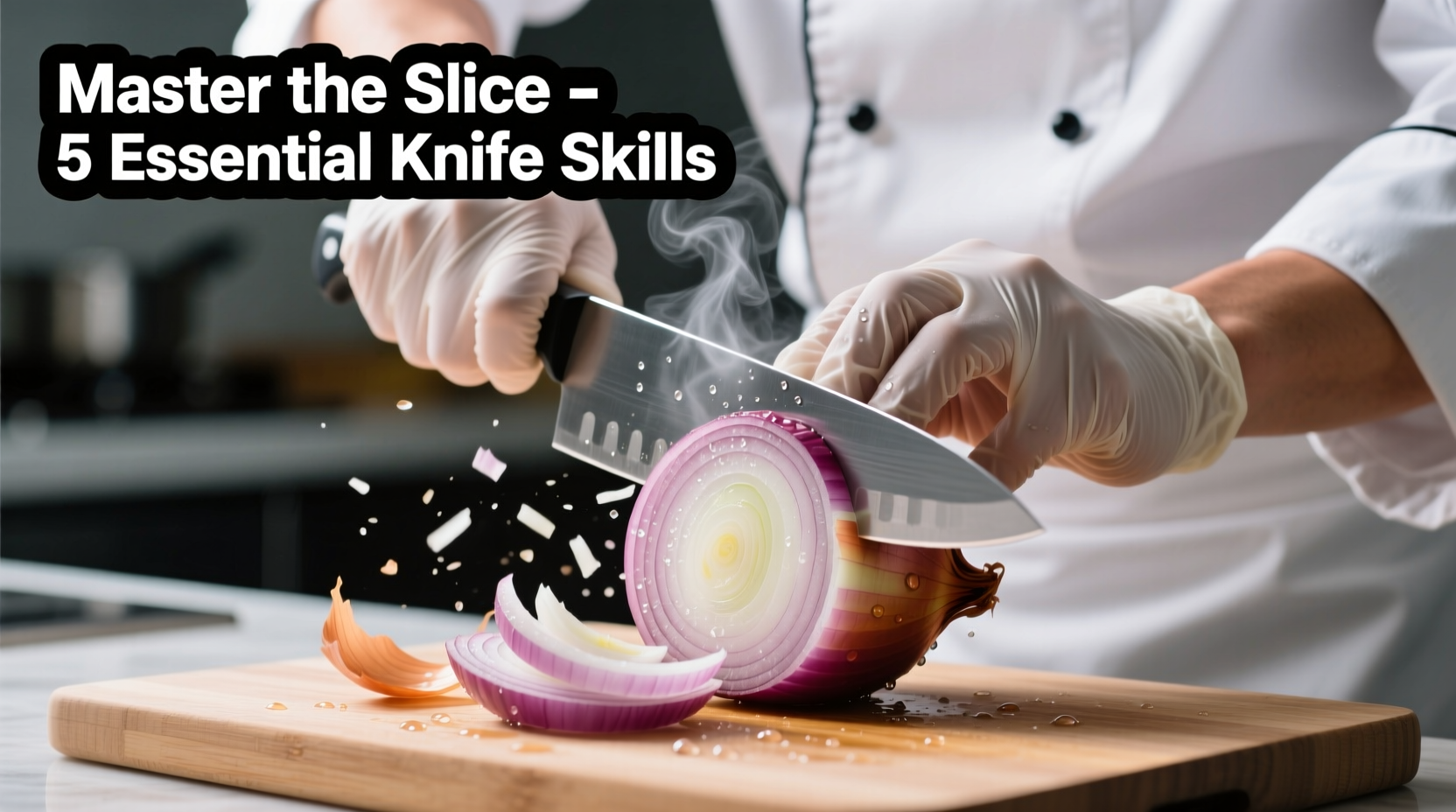Properly sliced onions maintain their crisp texture for 7-10 days when stored correctly in airtight containers at 34-38°F (1-3°C), according to USDA food safety guidelines. The ideal thickness for most culinary applications ranges from 1/8 to 1/4 inch, balancing flavor release with structural integrity during cooking.
Ever wondered why your sliced onions turn mushy or make you cry uncontrollably? You're not alone. Mastering onion slicing transforms ordinary dishes into culinary masterpieces while minimizing kitchen frustrations. This guide reveals professional techniques that home cooks can implement immediately to achieve perfect slices every time.
Why Onion Slicing Technique Matters More Than You Think
Onion structure directly impacts flavor distribution and texture in your dishes. When you slice an onion properly, you control:
- How quickly flavors infuse into dishes
- Texture retention during cooking
- Visual appeal of finished dishes
- Storage longevity of prepared ingredients
Professional chefs understand that the direction of your knife cuts relative to the onion's growth rings determines whether your slices maintain shape during sautéing or dissolve into sauces. Cutting parallel to the rings creates delicate slices ideal for French onion soup, while perpendicular cuts yield sturdy rings perfect for burgers.

Step-by-Step Perfect Slicing Method
Follow this professional approach for tear-free, uniform slices:
- Chill first: Refrigerate onions for 30 minutes to reduce volatile compound release
- Sharp knife only: Use a 6-8 inch chef's knife with proper sharpening (dull knives crush cells, releasing more irritants)
- Stable base: Cut 1/4 inch from root end but leave intact to hold layers together
- Strategic halving: Slice vertically through root end for stability during slicing
- Consistent motion: Use claw grip with non-knife hand, maintaining even pressure
| Slice Thickness | Best Culinary Uses | Storage Duration |
|---|---|---|
| 1/8 inch | Ceviche, salads, garnishes | 3-4 days |
| 1/4 inch | Sautéing, sandwiches, burgers | 7-10 days |
| 1/2 inch | Grilling, kebabs, roasting | 5-7 days |
Storage Science: Maximizing Freshness
Food safety experts at the National Onion Association confirm that sliced onions remain safe for consumption for 7-10 days when stored properly. The critical factors are:
- Air exposure: Use airtight containers to prevent oxidation (source: USDA FoodKeeper app)
- Temperature control: Maintain 34-38°F (1-3°C) in refrigerator
- Moisture management: Place paper towel in container to absorb excess moisture
- Cross-contamination: Store away from strong-smelling foods like fish
Contrary to popular belief, storing sliced onions in water significantly reduces their shelf life to just 1-2 days while leaching flavor compounds. For meal prep enthusiasts, portioning sliced onions into recipe-sized containers prevents repeated temperature fluctuations that accelerate spoilage.
Common Slicing Mistakes and Solutions
Even experienced cooks make these critical errors:
- Mistake: Cutting through root end completely
- Solution: Leave 1/4 inch of root intact for structural stability
- Mistake: Using wet cutting board
- Solution: Wipe board dry between slices to maintain knife control
- Mistake: Storing in non-airtight containers
- Solution: Use containers with silicone seals for optimal freshness
For those sensitive to onion fumes, the American Chemical Society confirms that chilling onions before cutting reduces lachrymatory factor release by up to 60%. Alternatively, work near running water or use a fan to redirect vapors away from your face.
Professional Applications Across Cuisines
Different culinary traditions utilize specific slicing techniques:
- Mexican cuisine: Thin half-moons for salsas and guacamole (1/8 inch)
- French cuisine: Uniform brunoise for mirepoix (1/16 inch dice)
- Indian cuisine: Thick slices for bhajis and curries (1/4 inch)
- American cuisine: Ring slices for burgers and sandwiches
Understanding these regional variations helps recreate authentic flavors. For instance, Japanese chefs often use a mandoline for paper-thin slices in onion rings, while Italian cooks prefer hand-slicing for better texture control in pasta sauces.
Troubleshooting Browning and Texture Issues
When sliced onions turn brown prematurely, it's usually due to one of these factors:
- Oxidation: Exposure to air triggers enzymatic browning (similar to apples)
- Temperature fluctuations: Taking onions in and out of refrigerator
- Improper container: Using metal containers that accelerate oxidation
The University of California Davis Postharvest Technology Center recommends adding a squeeze of lemon juice (1 teaspoon per cup of slices) to maintain color without altering flavor significantly. For best results, consume within 5 days for optimal texture and nutritional value.
Maximizing Flavor and Nutrition
Sliced onions retain more nutrients when handled properly. Research published in the Journal of Food Science shows that:
- Waiting 10 minutes after slicing increases antioxidant availability by 30%
- Thicker slices preserve more quercetin (a powerful flavonoid)
- Storing in glass containers maintains higher vitamin C levels than plastic
For maximum health benefits, incorporate sliced raw onions into dishes rather than cooking them immediately. The enzymatic reactions that occur during the first 10 minutes after cutting significantly boost the bioactive compounds responsible for onions' health benefits.











 浙公网安备
33010002000092号
浙公网安备
33010002000092号 浙B2-20120091-4
浙B2-20120091-4